May 4 – 10: How do you select and research exotic locations?
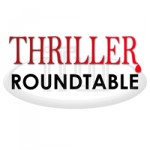 It’s standing room only this week! Join ITW members R.G. Belsky, Ian Pisarcik, Paul D. Brazill, Paul Levine, Diane Byington, Elena Taylor, Tom Young, Tim Tigner, Mary Lawrence, Joe Ricker, Dana King, Arthur Kerns, Ann Simas, Kaye D. Schmitz, Nick Thacker and JoAnn Smith Ainsworth as they discuss the use of exotic locations in thrillers. How do you select and research those places? Scroll down to the “comments” section to follow along. You won’t want to miss it!
It’s standing room only this week! Join ITW members R.G. Belsky, Ian Pisarcik, Paul D. Brazill, Paul Levine, Diane Byington, Elena Taylor, Tom Young, Tim Tigner, Mary Lawrence, Joe Ricker, Dana King, Arthur Kerns, Ann Simas, Kaye D. Schmitz, Nick Thacker and JoAnn Smith Ainsworth as they discuss the use of exotic locations in thrillers. How do you select and research those places? Scroll down to the “comments” section to follow along. You won’t want to miss it!
 Tom Young, an Air National Guard veteran who flew in Iraq and Afghanistan, has written several novels set in present-day conflicts. More recently, he has turned his attention to historical fiction, writing thrillers set in World War II. Young spent more than twenty years as a flight engineer on the C-5 Galaxy and the C-130 Hercules. He retired at the rank of Senior Master Sergeant. When not writing, he works as an airline pilot.
Tom Young, an Air National Guard veteran who flew in Iraq and Afghanistan, has written several novels set in present-day conflicts. More recently, he has turned his attention to historical fiction, writing thrillers set in World War II. Young spent more than twenty years as a flight engineer on the C-5 Galaxy and the C-130 Hercules. He retired at the rank of Senior Master Sergeant. When not writing, he works as an airline pilot.
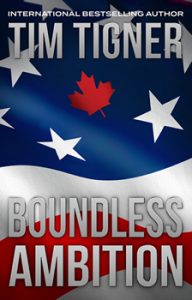 A Special Forces veteran and former biotech CEO, Tim Tigner lived and worked all over the world before turning to writing full-time. He now has a dozen bestsellers to his name, including the Watch What You Wish For series, which begins with The Price of Time, an Amazon Top-100 Bestseller of 2019. His latest novel, Boundless Ambition, is the fifth in the popular Kyle Achilles series. Google “Tigner” to learn more.
A Special Forces veteran and former biotech CEO, Tim Tigner lived and worked all over the world before turning to writing full-time. He now has a dozen bestsellers to his name, including the Watch What You Wish For series, which begins with The Price of Time, an Amazon Top-100 Bestseller of 2019. His latest novel, Boundless Ambition, is the fifth in the popular Kyle Achilles series. Google “Tigner” to learn more.
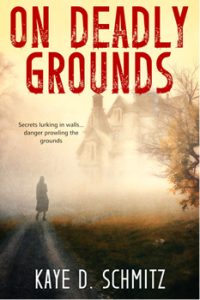 Kaye Schmitz, author of the award-winning novel, THE CONSORT CONSPIRACY, releases her second novel, ON DEADLY GROUNDS, on May 8, 2020. Active in the writing community, she is a member of the Florida Writers’ Association, Sisters in Crime, and International Thriller Writers. She is an active speaker and teaches a writer’s workshop, “We All Have a Story to Tell.” Ms. Schmitz makes her home in St. Augustine, FL, where she lives with her husband, Michael.
Kaye Schmitz, author of the award-winning novel, THE CONSORT CONSPIRACY, releases her second novel, ON DEADLY GROUNDS, on May 8, 2020. Active in the writing community, she is a member of the Florida Writers’ Association, Sisters in Crime, and International Thriller Writers. She is an active speaker and teaches a writer’s workshop, “We All Have a Story to Tell.” Ms. Schmitz makes her home in St. Augustine, FL, where she lives with her husband, Michael.
 Paul D. Brazill’s books include Last Year’s Man, Gumshoe Blues, and Kill Me Quick. He was born in England and lives in Poland. His writing has been translated into Italian, Finnish, Polish, German, and Slovene. He has had writing published in various magazines and anthologies, including The Mammoth Books of Best British Crime.
Paul D. Brazill’s books include Last Year’s Man, Gumshoe Blues, and Kill Me Quick. He was born in England and lives in Poland. His writing has been translated into Italian, Finnish, Polish, German, and Slovene. He has had writing published in various magazines and anthologies, including The Mammoth Books of Best British Crime.
 Dana King writes the Penns River novels, or which the newest, Pushing Water, drops on May 4, is the fifth. His Nick Forte series has two Shamus Award nominations from the Private Eye Writers of America, for A Small Sacrifice and The Man in the Window. His short work appears in the anthologies The Black Car Business, Unloaded 2, and Down to the River. He is a member of ITW, PWA, and Sisters in Crime.
Dana King writes the Penns River novels, or which the newest, Pushing Water, drops on May 4, is the fifth. His Nick Forte series has two Shamus Award nominations from the Private Eye Writers of America, for A Small Sacrifice and The Man in the Window. His short work appears in the anthologies The Black Car Business, Unloaded 2, and Down to the River. He is a member of ITW, PWA, and Sisters in Crime.
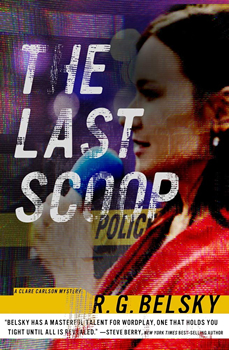 R. G. Belsky is an author of crime fiction and a journalist in New York City. His newest mystery, THE LAST SCOOP, will be published in May 2020 by Oceanview. It is the third in a series featuring Clare Carlson, the news director for a New York City TV station. The first Clare Carlson book, YESTERDAY’S NEWS, came out in 2018. It won the David Award at Deadly Ink for Best Mystery of 2018. The second Clare Carlson book, BELOW THE FOLD, was in 2019. He also is the author of two thrillers written under the pen name of Dana Perry – THE SILENT VICTIM 2019) and THE GOLDEN GIRL (June, 2020).
R. G. Belsky is an author of crime fiction and a journalist in New York City. His newest mystery, THE LAST SCOOP, will be published in May 2020 by Oceanview. It is the third in a series featuring Clare Carlson, the news director for a New York City TV station. The first Clare Carlson book, YESTERDAY’S NEWS, came out in 2018. It won the David Award at Deadly Ink for Best Mystery of 2018. The second Clare Carlson book, BELOW THE FOLD, was in 2019. He also is the author of two thrillers written under the pen name of Dana Perry – THE SILENT VICTIM 2019) and THE GOLDEN GIRL (June, 2020).
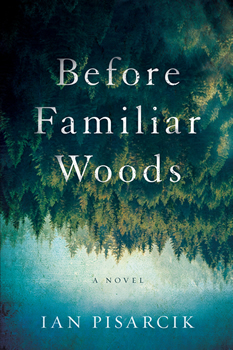 Ian Pisarcik was born and raised in rural New England. His stories and poems have appeared in the Roanoke Review, Lullwater Review, Maine Review, and the Flyway Journal of Writing and Environment. He currently lives in Washington State with his wife, newborn daughter, and Labrador retriever. BEFORE FAMILIAR WOODS is his first novel.
Ian Pisarcik was born and raised in rural New England. His stories and poems have appeared in the Roanoke Review, Lullwater Review, Maine Review, and the Flyway Journal of Writing and Environment. He currently lives in Washington State with his wife, newborn daughter, and Labrador retriever. BEFORE FAMILIAR WOODS is his first novel.
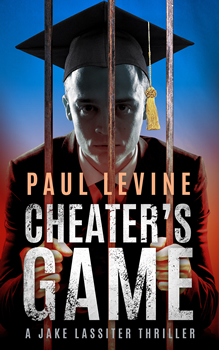 Paul Levine worked as a newspaper reporter, a law professor and a trial lawyer before becoming a full-time novelist. Obviously, he cannot hold a job. Paul claims that writing fiction comes naturally: he told whoppers for many years in his legal briefs. His books have been translated into 23 languages, none of which he can read. In Germany, his first novel, “TO SPEAK FOR THE DEAD,” has recently been published as “In Vertretung Der Toten.”
Paul Levine worked as a newspaper reporter, a law professor and a trial lawyer before becoming a full-time novelist. Obviously, he cannot hold a job. Paul claims that writing fiction comes naturally: he told whoppers for many years in his legal briefs. His books have been translated into 23 languages, none of which he can read. In Germany, his first novel, “TO SPEAK FOR THE DEAD,” has recently been published as “In Vertretung Der Toten.”
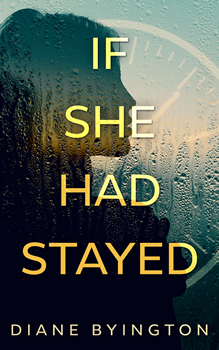 Diane Byington has been a tenured college professor, yoga teacher, psychotherapist, and executive coach. Also, she raised goats for fiber and once took a job cooking hot dogs for a NASCAR event. She still enjoys spinning and weaving, but she hasn’t eaten a hot dog or watched a car race since. Besides reading and writing, Diane loves to hike, kayak, and photograph sunsets. She and her husband divide their time between Boulder, Colorado, and Dunedin, Florida.
Diane Byington has been a tenured college professor, yoga teacher, psychotherapist, and executive coach. Also, she raised goats for fiber and once took a job cooking hot dogs for a NASCAR event. She still enjoys spinning and weaving, but she hasn’t eaten a hot dog or watched a car race since. Besides reading and writing, Diane loves to hike, kayak, and photograph sunsets. She and her husband divide their time between Boulder, Colorado, and Dunedin, Florida.
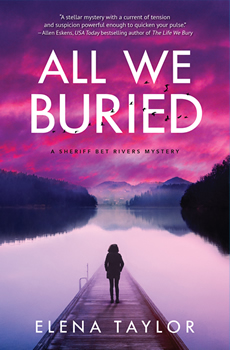 Elena Taylor wrote the humorous Eddie Shoes Mystery Series under the name Elena Hartwell. Now she returns to her dramatic roots—she spent over 20 years in the theater—with this darker, more psychological tale. When she’s not writing, she’s either working with writers one-on-one as a developmental editor with Allegory Editing, or spending time with her two horses at the stables or her two cats, one dog, and one husband at their home in beautiful Snoqualmie Valley, Washington.
Elena Taylor wrote the humorous Eddie Shoes Mystery Series under the name Elena Hartwell. Now she returns to her dramatic roots—she spent over 20 years in the theater—with this darker, more psychological tale. When she’s not writing, she’s either working with writers one-on-one as a developmental editor with Allegory Editing, or spending time with her two horses at the stables or her two cats, one dog, and one husband at their home in beautiful Snoqualmie Valley, Washington.
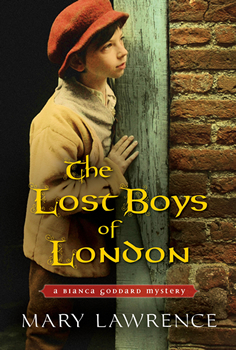 Mary Lawrence is author of the Bianca Goddard Mysteries set in the final years of King Henry VIII’s England. The series has been commended for its realistic portrayal of commoners and careful research. She lives in Maine and runs a berry farm with her husband. Other books in the series include The Alchemist’s Daughter, Death of an Alchemist, Death at St. Vedast, and The Alchemist of Lost Souls.
Mary Lawrence is author of the Bianca Goddard Mysteries set in the final years of King Henry VIII’s England. The series has been commended for its realistic portrayal of commoners and careful research. She lives in Maine and runs a berry farm with her husband. Other books in the series include The Alchemist’s Daughter, Death of an Alchemist, Death at St. Vedast, and The Alchemist of Lost Souls.
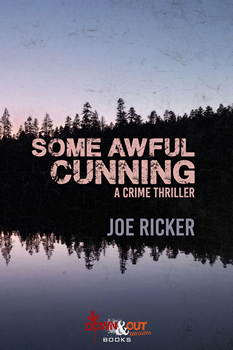 Joe Ricker is a former bartender for Southern literary legends Barry Hannah and Larry Brown. He has also worked as a cab driver, innkeeper, acquisitions specialist, professor, and in the Maine timber industry. He currently lives in Reno, Nevada, and spends much of his free time walking uphill.
Joe Ricker is a former bartender for Southern literary legends Barry Hannah and Larry Brown. He has also worked as a cab driver, innkeeper, acquisitions specialist, professor, and in the Maine timber industry. He currently lives in Reno, Nevada, and spends much of his free time walking uphill.
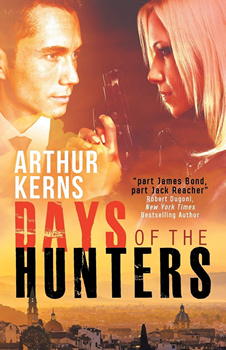 Arthur Kerns joined the FBI with a career in counterespionage and counterterrorism. On retirement, he became a consultant with the Director of Central Intelligence and the Department of State. His lengthy assignments took him to over 65 countries. He earned degrees in International Relations from St. Joseph’s College in Philadelphia and an MBA from New York University. He spent a year studying Arabic at the Defense Language Institute in Monterey, California. A past president of the Arizona chapter of the Association of Former Intelligence Officers, he is married with two sons. His award-winning short stories have been published in a number of anthologies.
Arthur Kerns joined the FBI with a career in counterespionage and counterterrorism. On retirement, he became a consultant with the Director of Central Intelligence and the Department of State. His lengthy assignments took him to over 65 countries. He earned degrees in International Relations from St. Joseph’s College in Philadelphia and an MBA from New York University. He spent a year studying Arabic at the Defense Language Institute in Monterey, California. A past president of the Arizona chapter of the Association of Former Intelligence Officers, he is married with two sons. His award-winning short stories have been published in a number of anthologies.
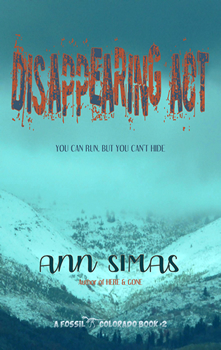 Ann Simas lives in Oregon, but she is a Colorado girl at heart, having grown up in the Rocky Mountains. The author of 29 novels, one novella, and one short-story collection, she particularly likes to write a mix of mystery/thriller/suspense, with a love story and paranormal or supernatural elements. Three of her books have been Romance Writers of America Golden Heart Finalists.
Ann Simas lives in Oregon, but she is a Colorado girl at heart, having grown up in the Rocky Mountains. The author of 29 novels, one novella, and one short-story collection, she particularly likes to write a mix of mystery/thriller/suspense, with a love story and paranormal or supernatural elements. Three of her books have been Romance Writers of America Golden Heart Finalists.
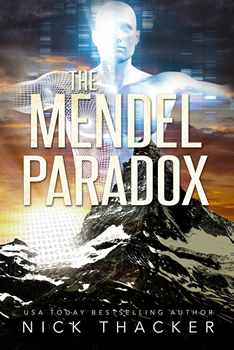 Nick Thacker is the USA Today bestselling author of action-adventure thrillers and mysteries, including the Harvey Bennett Thrillers series. Often mentioned as a cross between Clive Cussler and James Rollins, his stories are written in a fast-paced, punchy style. He lives in Colorado Springs with his wife, two kids, two dogs, and a tortoise.
Nick Thacker is the USA Today bestselling author of action-adventure thrillers and mysteries, including the Harvey Bennett Thrillers series. Often mentioned as a cross between Clive Cussler and James Rollins, his stories are written in a fast-paced, punchy style. He lives in Colorado Springs with his wife, two kids, two dogs, and a tortoise.
 JoAnn Smith Ainsworth experienced food-rationing, victory gardens, and blackout sirens as a child in WWII. These memories help create vivid descriptions of time and place, which makes you a participant in a fast-paced journey through paranormal realms as US psychics hunt down Nazi spies. Ms. Ainsworth lives in California. She has B.A. and M.A.T. degrees in English and has completed her M.B.A. studies. She has published six previous novels.
JoAnn Smith Ainsworth experienced food-rationing, victory gardens, and blackout sirens as a child in WWII. These memories help create vivid descriptions of time and place, which makes you a participant in a fast-paced journey through paranormal realms as US psychics hunt down Nazi spies. Ms. Ainsworth lives in California. She has B.A. and M.A.T. degrees in English and has completed her M.B.A. studies. She has published six previous novels.
- LAST GIRL MISSING with K.L. Murphy - July 25, 2024
- CHILD OF DUST with Yigal Zur - July 25, 2024
- THE RAVENWOOD CONSPIRACY with Michael Siverling - July 19, 2024
